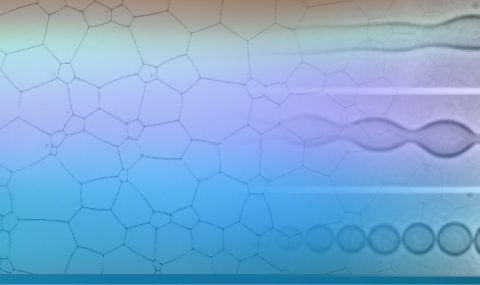Life at the level of single cells is subject to unavoidable fluctuations in gene expression, and cells having the same genome may behave rather differently. How can development of a multicellular organism with a precise blueprint take place and cell fates determined in face of the noisy behavior at the level of single cells? We study Anabaena, a cyanobacterial model system comprised of cells arranged in a one-dimensional filament, which forms a nearly-regular developmental pattern of two types of cells in nitrogen-poor environments, with a clear division of labor: one type carries out photosynthesis while the other carries out nitrogen fixation. We interrogate each cell in the organism at all stages of development to study cellular decisions and understand how patterns are formed and maintained.

The Frontier between Physics and Biology

